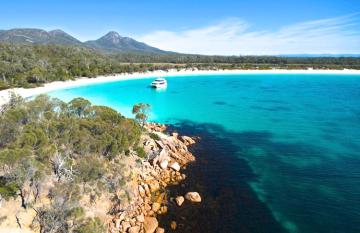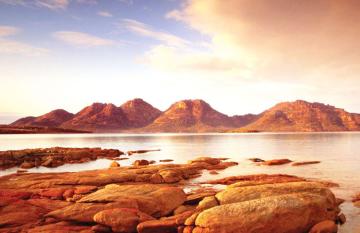
Did you know that Tasmania is the perfect location to view the ethereal Southern Lights? The emergence of colours and flickers in the starry night sky creates an impression of the universe close at hand. The Southern Lights create a fairy-tale on Earth, turning the rural landscapes into truly majestic places.
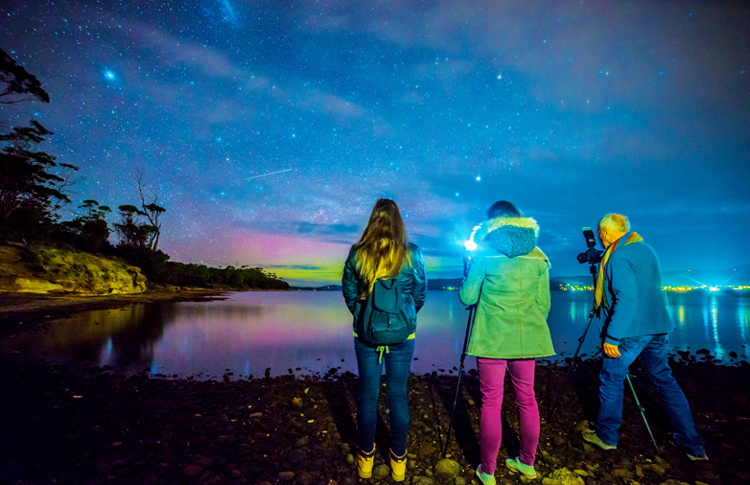
Contents
A common question for the First Light Travel team is “where can I see the Southern Lights in Tasmania?” Naturally this is closely followed by “when is the best time to see them?” If you’re curious about whether your upcoming trip to Tasmania will give you a chance to see this amazing natural phenomenon, read on to learn more about when, where, and how to see the Southern Lights in Tasmania.
What are the Southern Lights?
Many travelers have heard of the famous Northern Lights, but are surprised and intrigued to learn that the Southern Lights exist too. The Southern Lights are also known as Aurora Australis, and they are visible only in the southern hemisphere. The top locations to see the Southern Lights are the southernmost destinations in the world, including Tasmania and New Zealand.
The scientific explanation for Aurora Australis is the same as for its northern counterpart the Aurora Borealis. When charged particles emitted by the sun strike atoms in the atmosphere, electrons in those atoms change energy states. Auroras are produced when the particles of these solar winds and the earth’s magnetic field collide. As they return to their resting state they emit light as various colours, and this is what we call the aurora. Typically the Southern Lights show as purple, yellow and even red, unlike the Northern Lights which tend to emit green and blue light.
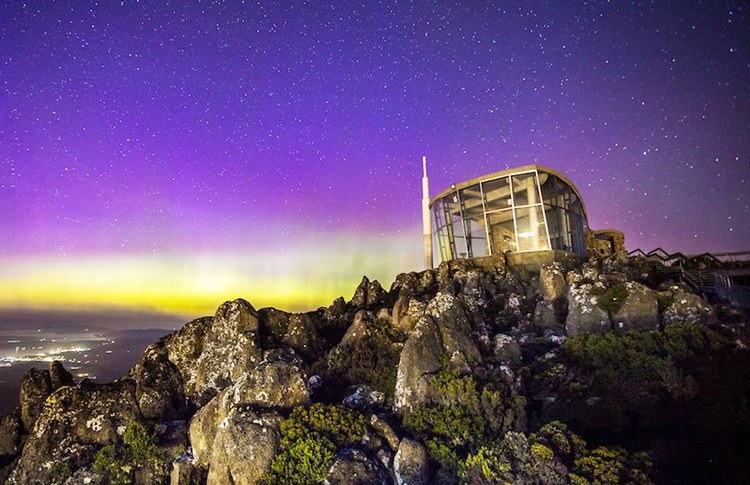
Where are the best places in Tasmania to see the Southern Lights?
Nearly all of Tassie is good for aurora spotting, but we recommend looking for unobstructed views facing south. The South Arm Peninsula (south of Hobart), Mount Nelson, Mount Wellington, Rosny Hill and Seven Mile are just a few ideas.
Hobart
As Tasmania’s biggest city, Hobart may surprise you as a destination to see the Southern Lights, but it is possible. Seven Mile Beach (near the airport) has great southern views and is protected from most light pollution. The golf course at Rosny Hill is another spot with minimal light pollution.
Mount Wellington
A 30 minute drive west of Hobart, Mount Wellington is one of the best aurora viewpoints in the area. At over 4000ft (1200m) in elevation, you’ll be well above most light pollution on a dark night, however, depending on the conditions of the atmosphere, the light pollution from the suburb of Kingston can make decent sightings or photography difficult.
Mount Nelson
A suburb of southern Hobart, Mount Nelson offers a great vantage point of the city – and of the Southern Lights on a night where the aurora is particularly bright and strong. For the best view point, head to the top of Mount Nelson to the Signal Station, where you’ll have panoramic views of the city and night sky.
South Arm Peninsula
South Arm Peninsula is a 40 minute drive south-east of Hobart, and a haven for astrophotographers. Clifton Beach and Calverts Beach both offer excellent opportunities to see the aurora in the dark night sky – both beaches have good south-facing views that are key to seeing the Southern Lights.
Cockle Creek
A highly recommended destination if you want to see the Southern Lights in Tasmania is Cockle Creek, near the southernmost tip of Tasmania. A two hour drive south of Hobart, Cockle Creek is best for travelers with a rental car and commitment to try and see the Aurora Australis firsthand. The nearest accommodation is in nearby Ida Bay - ask the team at First Light Travel HQ for options if you want to spend a night or two near this ideal viewing spot
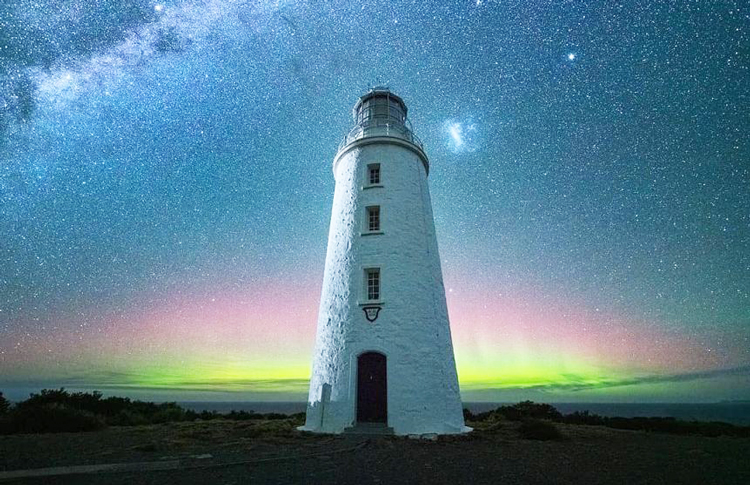
When is the ideal time of year to view the Southern Lights?
The Tasmanian aurora spectacle is somewhat elusive so we can never be sure when the solar winds will make it shine the brightest. Experienced observers recommend planning the trip for September when the Southern Lights are most vivid. Another relatively good season for Aurora Australis in Tasmania is in winter, roughly from May to August. At this time of year, nights are longer, giving more opportunities to spot the Southern Lights. However, did you know that the Southern Lights can be seen year-round in Tasmania?
Scientific predictions can be unreliable and all it takes is the occurrence of sunspots and the coronal mass ejection to create this stellar show. Overall, it is quite unpredictable and sometimes space weather maps can help, but the sun will ultimately determine its arrival. No matter what time of year you visit, you’ll need to wait for a dark, clear night to try and see the Southern Lights in Tasmania. In summer, you might need to stay up quite late, and at all times of year we recommend bringing warm clothes as it can get cold at night, especially in the depths of winter!
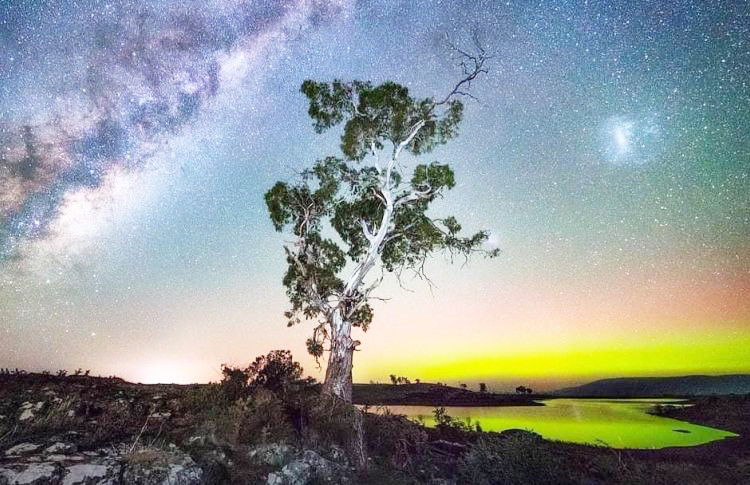
Do I need a special camera to capture the Southern Lights?
Although photos online and in glossy magazines will show an array of bright colours, the naked eye typically only picks up white or grey flashes or flickering on the horizon. It is only once you do a long exposure with a camera that the colours come to life and vivid purples and yellows present themselves. There are instances when viewing coloured light can be possible but this is rare, as humans struggle to see colours at night. The lights have been described as “dancing”, and making magical movements in the night sky.
An SLR camera set to manual mode with a tripod is the best way to ensure a stable and clear image, with a remote an added bonus. Seek out a wide lens which will allow for maximum light into the camera and choose the highest ISO (800 to 3200). The shutter speed should be anywhere from 5 to 15 seconds and the focus set to infinity. Lastly the aperture should be as wide as possible, which translates to an f-stop of f/2.8 to f/4.
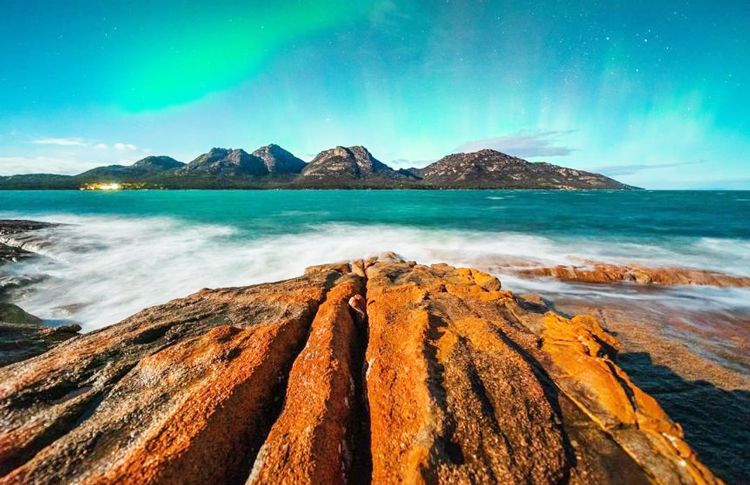
Ideal itineraries for chasing the Southern Lights
Any of the customisable First Light Travel Tasmania itineraries would be great! Although we do have a soft spot for our 8 Day Tasmania Winter Wonderland Self Drive Tour. Tasmania's rugged beauty takes on an enchanted quality in winter. The air is crisp, and falling snow dusts the mountains and eucalyptus trees. Festivals celebrate apple cider, chocolate, singing, and the winter solstice. Clear nights are ideal for stargazing and seeing the southern lights of the Aurora Australis. It's also the perfect season for a sip of Tasmanian whisky by a cozy open fire. For more details about winter in Tasmania, read our recent blog on What to do in Tasmania during Winter. There’s information on whisky tasting, perfect winter walks, underworld caves, ghost tours and more, plus all the important details on road safety and weather. We can also recommend other itineraries which include the southern reaches of Tasmania, such as the 12 Day Discover Tasmania Road Trip itinerary, the 12 Day Complete Tasmania itinerary and the 8 Day Tasmania Wine and Dine Self Drive Tour, just to name a few!
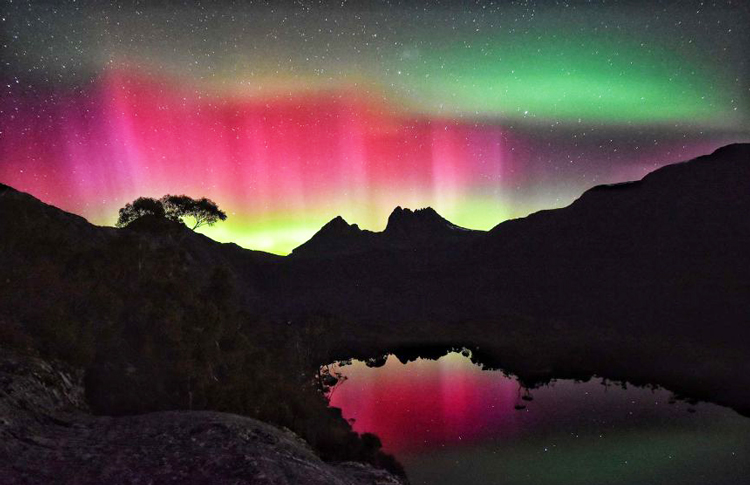
Summary
If you’re in Tasmania and in the mood to chase the Southern Lights, current updates are available on popular Facebook page “Aurora Australis Tasmania Alert NOW” or you can log into any one of the apps that exist for tracking the aurora such as Star Walk, Solar Monitor or Aurora Australis Forecast.
Have we convinced you to try a Tasmanian winter escape to try to see the Southern Lights? How about an early Spring adventure, to take advantage of the long nights but slighter warmer days? To explore your options further, our Free Planning Service is here to help. Our Locally-Based Travel Specialists will work closely with you to create a trip tailor-made to your exact specifications. We love Tasmania with a passion and can't wait for you to get in touch.
Feeling inspired to book your Tasmania getaway? View our most popular Tasmania Self Drive itineraries here!
At First Light Travel we can plan the perfect self-drive holiday for you. To get started and find ideas you can view our most popular itineraries - just remember that all of our trips are fully customisable.
Recent Posts
Blog Categories
Blog archives
- March 2025 (1)
- November 2024 (1)
- October 2024 (1)
- September 2024 (8)
- June 2024 (4)
- May 2024 (2)
- April 2024 (2)
- March 2024 (13)
- February 2024 (3)
- January 2024 (5)
- December 2023 (6)
- November 2023 (4)
- October 2023 (11)
- September 2023 (2)
- August 2023 (6)
- July 2023 (2)
- June 2023 (17)
- May 2023 (3)
- April 2023 (5)
- March 2023 (8)
- February 2023 (9)
- January 2023 (12)
- December 2022 (9)
- November 2022 (12)
- October 2022 (12)
- September 2022 (12)
- August 2022 (6)
- July 2022 (9)
- June 2022 (7)
- May 2022 (3)
- April 2022 (4)
- March 2022 (6)
- February 2022 (1)
- January 2022 (4)
- December 2021 (2)
- November 2021 (3)
- October 2021 (1)
- September 2021 (4)
- August 2021 (10)
- July 2021 (13)
- June 2021 (6)
- April 2021 (2)
- March 2021 (2)
- February 2021 (1)
- January 2021 (1)
- December 2020 (2)
- November 2020 (3)
- October 2020 (2)
- September 2020 (1)
- August 2020 (1)
- July 2020 (1)
- June 2020 (1)
- May 2020 (1)
- March 2020 (1)
- February 2020 (2)
- January 2020 (4)
- December 2019 (2)
- November 2019 (1)
- October 2019 (1)
- September 2019 (5)
- August 2019 (1)
- July 2019 (5)
- June 2019 (1)
- May 2019 (1)
- April 2019 (1)
- March 2019 (1)
- February 2019 (1)
- January 2019 (1)
- December 2018 (1)
- October 2018 (1)
- May 2018 (1)
- February 2018 (1)
- December 2017 (1)
- October 2017 (1)
- June 2017 (1)
- May 2017 (1)
- February 2017 (1)
- January 2017 (1)
- September 2016 (1)
- August 2016 (2)
- July 2016 (1)
- June 2016 (1)
- May 2016 (1)
- April 2016 (1)
- December 2015 (1)





